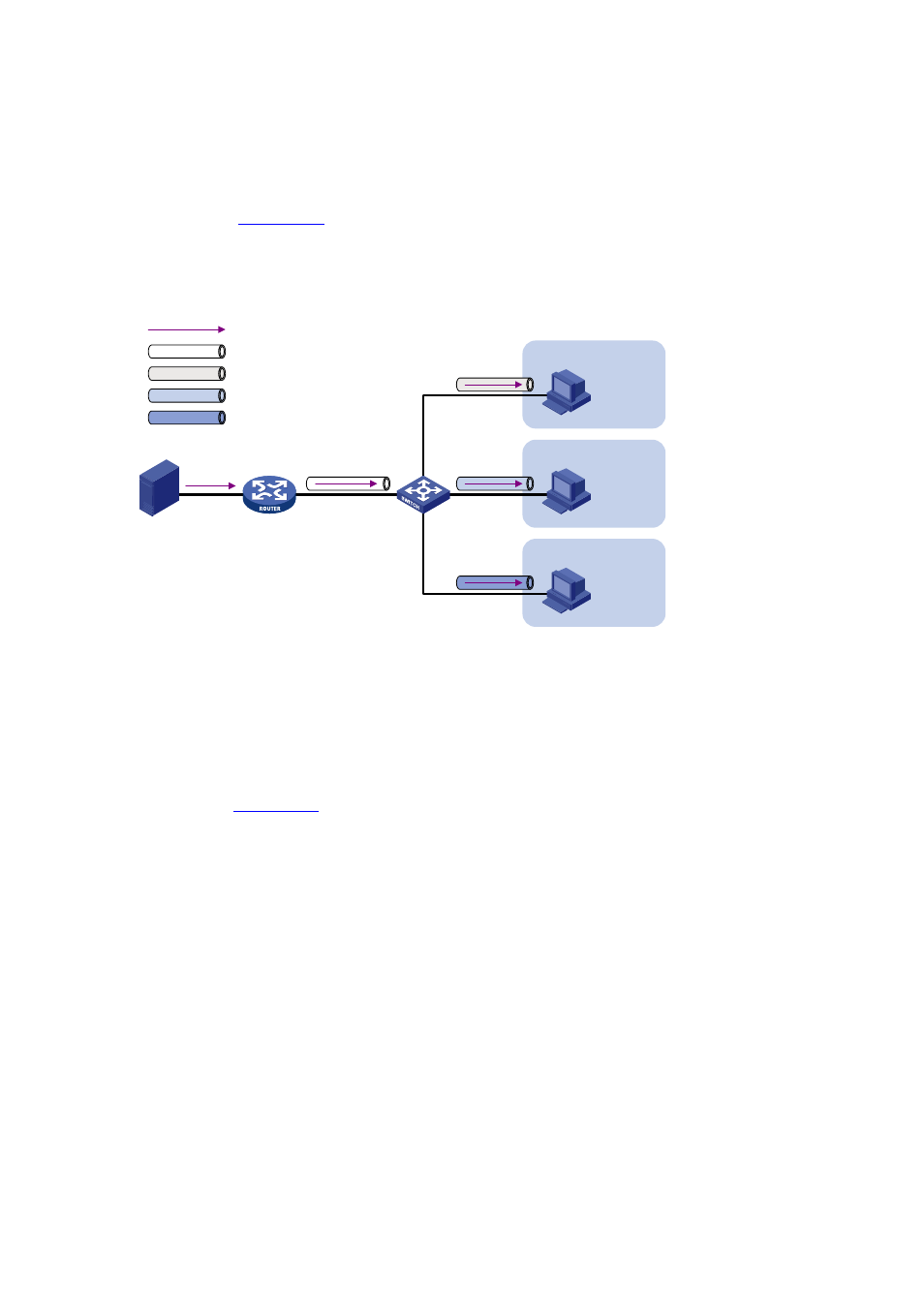Sub-vlan-based ipv6 multicast vlan, Port-based ipv6 multicast vlan – H3C Technologies H3C S7500E Series Switches User Manual
Page 298

10-2
each user VLAN. This saves the network bandwidth and lessens the burden of the Layer 3
device.
The IPv6 multicast VLAN feature can be implemented in two approaches, as described below:
Sub-VLAN-based IPv6 multicast VLAN
As shown in
, Host A, Host B and Host C are in three different user VLANs. On
Switch A, configure VLAN 10 as an IPv6 multicast VLAN, configure all the user VLANs as
sub-VLANs of this IPv6 multicast VLAN, and enable MLD snooping in the IPv6 multicast VLAN.
Figure 10-2 Sub-VLAN-based IPv6 multicast VLAN
Source
Router A
MLD querier
VLAN 2
VLAN 3
VLAN 4
Switch A
Receiver
Host A
Receiver
Host B
Receiver
Host C
IPv6 Multicast packets
VLAN 2
VLAN 3
VLAN 4
VLAN 10 (IPv6 Multicast VLAN)
After the configuration, MLD snooping manages router ports in the IPv6 multicast VLAN and
member ports in the sub-VLANs. When forwarding multicast data to Switch A, Router A needs
to send only one copy of multicast traffic to Switch A in the IPv6 multicast VLAN, and Switch A
distributes the traffic to the IPv6 multicast VLAN’s sub-VLANs that contain receivers.
Port-based IPv6 multicast VLAN
As shown in
, Host A, Host B and Host C are in three different user VLANs. All the
user ports are hybrid ports. On Switch A, configure VLAN 10 as an IPv6 multicast VLAN, assign
all the user ports to this IPv6 multicast VLAN, and enable MLD Snooping in the IPv6 multicast
VLAN and all the user VLANs.
